The Very best Cookware, According to Science
In the midst of an ongoing apocalyptic reality that in no way would seem to conclude, what’s in your pots and pans could possibly be the very last detail on your head. But now, a lot more than at any time, it may well be time to take inventory of what is in the kitchen and make confident it’s harmless to cook on.
In latest months, there is been an unparalleled return to the property kitchen. In a study of 1,000 people by the Global Food items Facts Council, half explained they were much more very likely to cook a food from scratch than they had been at the beginning of the pandemic. 30 % said they tried out new recipes.
At the exact time, a developing number of consumers are seeking cookware that will get the work accomplished and limit their publicity to humanmade industrial substances. But how do the distinctive alternatives on retail outlet shelves stack up in terms of health and fitness, environmental impression, sturdiness, and relieve of use?
Learn asked the professionals for their assistance on picking pots and pans that can prepare dinner up delectable food stuff and not increase unintended, poisonous substances to your dish: Suzanne Fenton, a reproductive endocrinologist at the National Institutes of Environmental Wellness Sciences (NIEHS) J. Kenji López-Alt, a chef, writer of the cooking science ebook The Food Lab, and main culinary marketing consultant for Major Eats and Olga Naidenko, vice president of science investigations at the Environmental Working Group (EWG), a nonprofit and nonpartisan advocacy group.
Conventional Nonstick
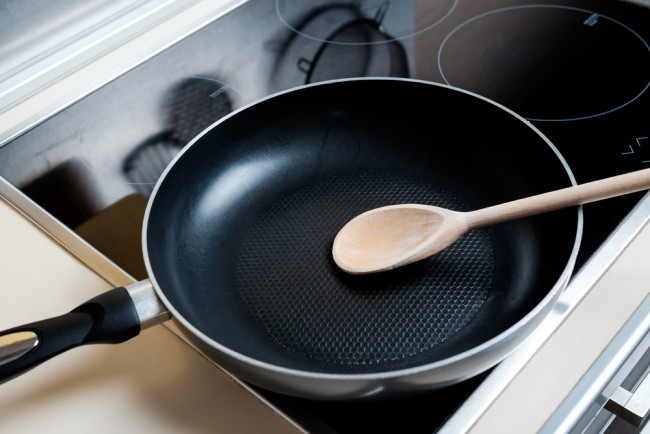
(Credit rating: Iurii Stepanov/Shutterstock)
Nonstick is the cooking area that is possibly the most probably to audio alarm bells in consumers’ minds. This type of coating, recognized commercially as Teflon, strains steel pans with a rough, synthetic resin to produce a slippery area. Its chemical name is polytetrafluoroethylene, or PTFE. Historically, it was created working with PFOAs, or perfluorooctanoic acids. PFOAs are component of a team of stubborn chemical substances that have been connected with well being pitfalls like thyroid difficulties, possible hormone disruption, kidney disorder and immune method concerns. The Food and drug administration labored with organizations to phase out the use of PFOAs and other very similar substances in food-contact apps by 2016. However, identical to in the cosmetics business, suppliers don’t have to disclose each ingredient they use in their coatings.
PTFE coating, or Teflon, isn’t automatically harmful if ingested by incident from scratching or chipping, according to Fenton and Naidenko, though its nonstick homes will weaken if scratched. What is more worrisome is when a PTFE nonstick pan is utilised at a substantial warmth — say, searing a steak or leaving a burner on by accident. Molecular bonds in the coating start out to crack down at around 500 degrees, in accordance to a presentation on dwelling chemical coatings by Michael Michalczyk, a chemical consultant. Nonstick coatings can then release unsafe fumes that irritate the respiratory procedure.
In accordance to Naidenko, PTFE coating these days is in essence the identical as the aged variations — just produced with significantly smaller sized quantities of PFOAs. But she adds that “the risk of it overheating, and harming our lungs — that danger stays. Those pans need to not be overheated [during] their lifetime — that would be a concern.”
Both equally Naidenko and Fenton famous that the overall health dangers posed by Teflon cookware is a compact hazard as opposed to the environmental contamination connected with manufacturing and disposing of these goods. According to the EWG, per- and polyfluoroalkyl substances (or PFAS), a group of chemicals that PFOAs belong to, can be uncovered in the ingesting drinking water of numerous U.S. metropolitan areas. PFAS enter the natural environment from Teflon goods breaking down in landfills, and from the manufacturing of plastic wrappings, water-repellant products, and issues like army firefighting foam. Whilst the Environmental Protection Agency suggests this team of substances can be incinerated as a way to retain them from other waste streams, Naikendo stated that this can lead to an air pollution issue for communities in which incineration takes place.
López-Alt says he not often takes advantage of nonstick cookware, but when he does it is for small-heat tasks like cooking an omelet, where by nonstick has a massive edge.
Ceramic
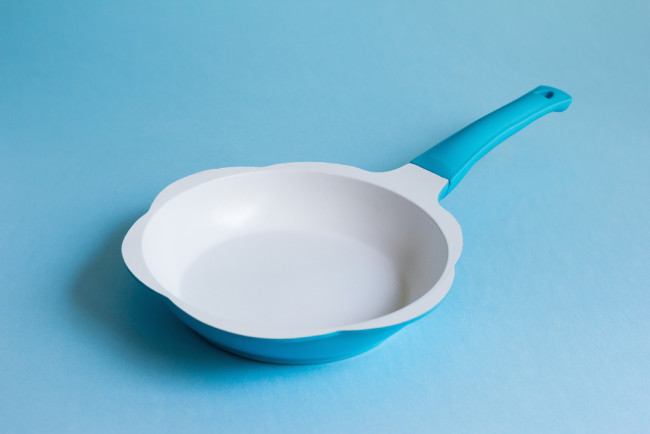
(Credit rating: Melica/Shutterstock)
Some of the most common new cookware crowding Instagram feeds and on line outlets are ceramic. These pots and pans boast labels like “PTFE and PFOA-free” or “non-poisonous,” and “healthy.” But simply because they’re a fairly new nonstick substitute, our professionals say not as considerably is recognised about them in conditions of the extended-term results on overall health and the surroundings. Pans promoted as “nonstick ceramic” are not made of pottery or clay, having said that. Pure ceramic cookware that’s nearer to pottery does exist, but it is much less frequent.
Instead, quite a few products and solutions labeled as ceramic include things like a metallic core with a chemically-blended coating that is sprayed on. There’s a excellent possibility a ceramic pan has a coating containing silica — the exact mineral that sand and silicone are manufactured out of — and several other substances. The viral Normally Pan, together with other well-known choices in the cookware aisle, are produced making use of sol-gel — a damp-chemical course of action that kinds nanoparticles into good elements and dehydrates them into ceramic or glasslike surfaces. But a downside to ceramic nonstick is that the coating does not final as prolonged as PTFE-based mostly pans. According to Naidenko, since it’s tricky to know what the correct contents of these coatings are, “even if a person has a pan that has not a great deal of PTFE in it, they even now should really not overheat something” in a ceramic pan.
Cast Iron
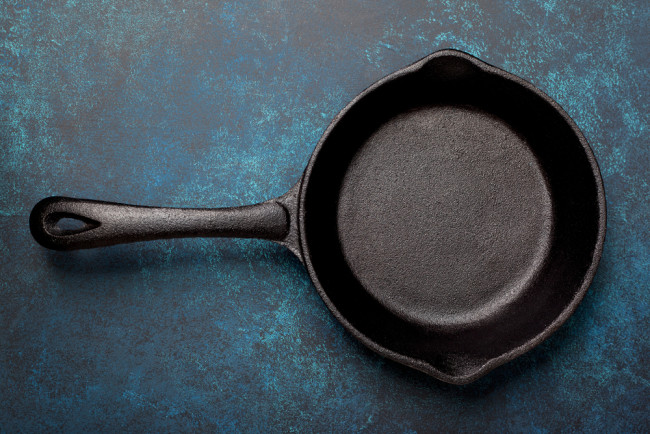
(Credit rating: natashamam/Shutterstock)
It may possibly be time to pay back extra focus to that buddy who won’t stop talking about seasoning their solid-iron skillet. That is since cast iron cookware is a single of the most trustworthy and time-honored supplies that can grace your kitchen. Forged iron cookware is fairly major — which for some could possibly be ample cause to go on it. But mainly because of its fat and density, forged iron can retain heat considerably extended than other metals like aluminum. Having said that, it does not distribute its heat pretty evenly, according to López-Alt.
From a safety point of view, what you see is what you get: iron alloyed with various amounts of carbon and silicon, cast into a shape. “Seasoning” a cast iron pan is the system of including oil or fat and heating the pan. This creates a reaction with the oil and the iron that varieties a considerably nonstick black layer — a polymer, López-Alt claims, which will get constructed up as it’s used. The area stands up properly to most sorts of cooking, and stops sticking, while acids like tomato and vinegar can split down the coating that forms.
Opposite to common perception, cast iron can be washed with cleaning soap devoid of damaging the floor — but leaving solid iron wet with water can bring about it to rust. In accordance to López-Alt, “The complete idea that you can’t clean up forged iron with soap is just a comprehensive fantasy that no extended applies,” he says, noting that older soaps containing lye did have an impact on forged iron, but not fashionable soaps. “I think folks just sort of little one their forged iron a great deal extra than they have to.” Small quantities of iron do, in reality, conclude up in meals, but for individuals prone to iron deficiency, this can basically be a profit.
Carbon Steel and Stainless Metal

(Credit: Yevlashkina Anastasiia/Shutterstock)
Steel cookware is some of the most frequent and common cookware about since of its sturdiness and how nicely it stores warmth electricity compared to other metals — a very little fewer than solid iron or copper, but better than other people, suggests López-Alt. Stainless metal ordinarily has more additional supplies, like chromium or nickel, and a conductive core like aluminum or copper, while carbon steel is just metal.
Carbon steel, which is popular for woks and crêpe pans, is extra identical to solid iron: It has some nonstick qualities and is very sturdy and warmth-resistant, but can also rust. Stainless steel can be set in a dishwasher, contrary to carbon steel, and it won’t react with acids as much. But in general, each are scratch-resistant and secure surfaces to prepare dinner on. Fenton favors stainless steel pans, when Lopez-Alt claims he prefers his carbon steel cookware, which ought to be seasoned like cast iron. “My serious advice would be to discover how to use carbon metal mainly because it really is the greatest,” he states.
Aluminum and Anodized Aluminum
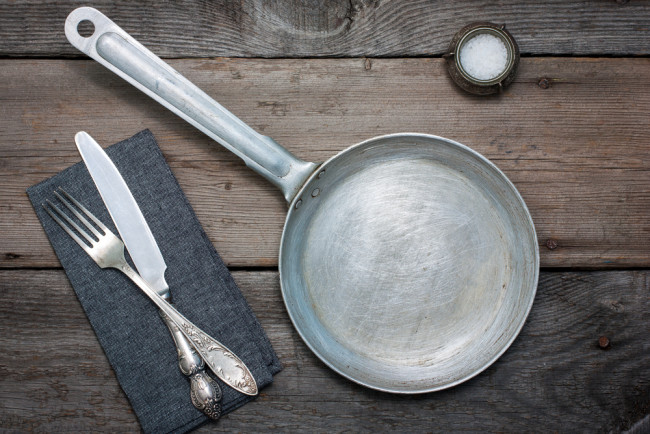
(Credit rating: A. Zhuravleva/Shutterstock)
Aluminum may well comprise a entire pan, be mixed with other metals, or make up a layer within the pan. It’s significantly less dense than metals like steel or iron, so it doesn’t retain heat really well. This signifies that it can awesome down speedily, but it does carry out — or transfer — warmth very very well, creating it a well known addition to pans built with other metals. In accordance to López-Alt, cooks in places to eat often use aluminum pans since their industrial burners can manage more powerful warmth than a normal household kitchen stove.
Anodization offers aluminum a incredibly tough, non-corrosive area. Anodized aluminum is produced with an electrolytic approach that makes it substantially more challenging and sleek — the a person downside is that you cannot put these types of pans in the dishwasher or you danger ruining the surface area, in accordance to the e book Things Cooks Appreciate, by Marie Simmons. Although there has been inconclusive research on backlinks among aluminum and Alzheimer’s, aluminum cookware is presently not regarded to be a wellbeing threat. The CDC says that though aluminum cookware can transfer aluminum into foods, in particular acidic kinds, “aluminum concentrations located in processed food items and foods cooked in aluminum pots are frequently viewed as to be secure.”
Copper
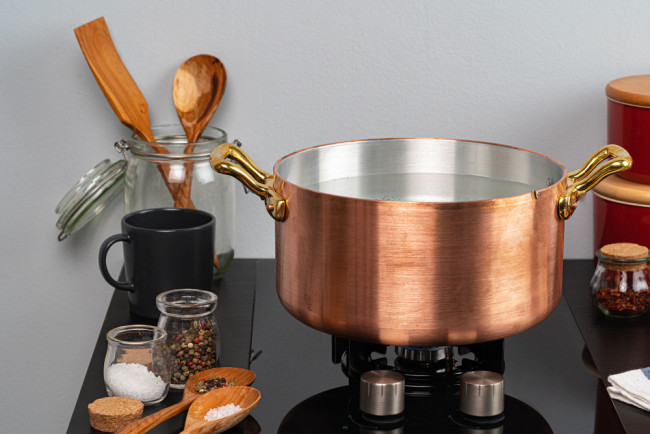
(Credit score: FabrikaSimf/Shutterstock)
Copper is favored by specialist chefs for its remarkable conductivity, which means it heats up rapidly and evenly. But copper need to not come into make contact with with food stuff on its possess, simply because it can respond with acidic components like wine, fruit juice, or vinegar and leach into foodstuff, according to the FDA’s 2017 Meals Code.
“While copper is pretty fantastic since of its heating attributes, much too a lot copper is not superior for the physique, primarily for children,” claims Naidenko. “It can even induce issues like diarrhea and nausea.” Several copper pots or pans are lined with a metallic like tin or stainless metal for this explanation.
Tin can don more conveniently than steel, so if you have an aged tin-lined copper pot, or if you place just one at a garden sale for a good cost, Naidenko explained it’s a good notion to glance for scratches. Copper also can be very costly and can oxidize in moist air, leaving a inexperienced discoloration.
Takeaways From the Specialists

(Credit: Ekkapop Sittiwantana/Shutterstock)
Just about every type of cookware will come with some strengths and drawbacks. A basic rule of thumb is to select cookware that functions very well for your requirements, and steer very clear of merchandise if the resources are not clearly outlined. You simply cannot go mistaken with simple large cookware that is sturdy and lengthy-long lasting. But note that even nonstick cookware has its location in modern kitchens and can be reserved for getting ready sensitive dishes that are inclined to sticking.
If you have the suggests and ought to change a pot or pan, consider cookware that will stand the check of time. And know that even if the materials are regarded as safe for human beings at residence, they could develop into environmental hazards when they split down in landfills at the finish of their lifetime. As Fenton explained, “If you are likely to commit in cookware, you may as effectively go for a thing which is going to be a little bit safer and last you a very little little bit longer.” And no issue which type of pan you pick out, the safest pan for your wellness might appear down to how you wield it in the kitchen. “I feel pretty substantially all the cookware out there correct now is really protected, as extended as you get care of it,” she says.
